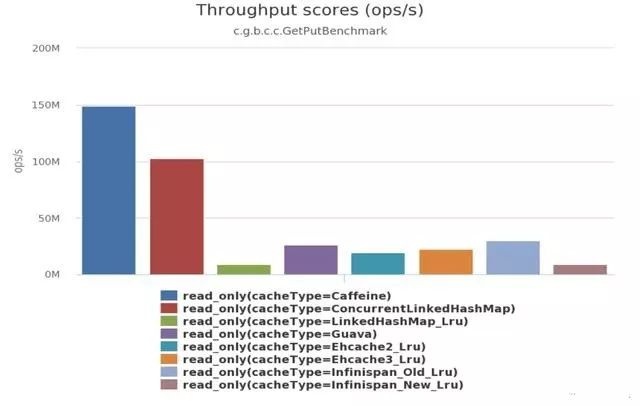本地缓存使用实践
Posted 戴泽supp
tags:
篇首语:本文由小常识网(cha138.com)小编为大家整理,主要介绍了本地缓存使用实践相关的知识,希望对你有一定的参考价值。
一、缓存选择Guava和Caffeine
Caffeine是一个高性能的Java缓存,有了它完全可以代替Guava Cache,来实现更加高效的缓存;Caffeine采用了W-TinyLFU回收策略,集合了LRU和LFU的优点,提供了一个最佳的命中率,在效率上可以秒杀Guava Cache。
官方性能测试结果:

二、Caffeine使用姿势
1、同步加载
import com.github.benmanes.caffeine.cache.Caffeine;
import com.github.benmanes.caffeine.cache.LoadingCache;
private LoadingCache<String, String> cache = Caffeine.newBuilder()
.maximumSize(100L)
.refreshAfterWrite(30, TimeUnit.SECONDS)
.expireAfterWrite(60, TimeUnit.SECONDS)
.build(key ->
log.info("LoadingCache.load begin");
Thread.sleep(2000L);
log.info("LoadingCache.load end");
return String.valueOf(number);
);
public String getCache(String key)
try
number++;
return cache.get(key);
catch (Exception ex)
log.error("TestCache.getCache exception", ex);
return null;
3、异步加载
private AsyncLoadingCache<String, String> asyncCacheLoader = Caffeine.newBuilder()
.maximumSize(100L)
.refreshAfterWrite(30, TimeUnit.SECONDS)
.expireAfterWrite(60, TimeUnit.SECONDS)
.buildAsync(key ->
log.info("AsyncLoadingCache.load begin");
Thread.sleep(2000L);
log.info("AsyncLoadingCache.load begin");
return String.valueOf(number);
);
public String getAsyncCache(String key)
CompletableFuture<String> future = asyncCacheLoader.get(key);
try
return future.get();
catch (Exception ex)
log.error("TestCache.getAsyncCache exception", ex);
return null;
4、使用注解 @Cacheable
a、配置caffeine
spring:
cache:
type: caffeine
caffeine:
spec: initialCapacity=10,maximumSize=200,expireAfterWrite=30s
b、开启spring cache
启动类添加@EnableCaching
c、代码示例
@Cacheable("addCache")
public int add(int one, int second)
try
Thread.sleep(2000);
catch (Exception e)
log.error("Calculation.add Exception", e);
return one + second;
以上是关于本地缓存使用实践的主要内容,如果未能解决你的问题,请参考以下文章